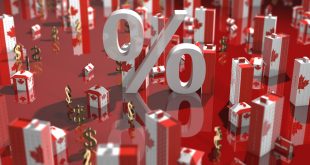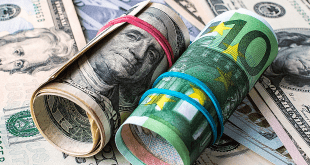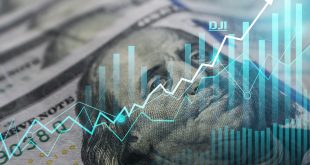Interviewed on Dubai TV on Monday, Mohammed Hashad, Head of Research and Development at Noor Capital and a member of the American Association of Technical Analysts, commented on the most important developments in the global financial markets on the first day of trading week, and most notably:
US
Mohammed Hashad recently pointed out the incredible performance of the American stock market, which has been on an unprecedented winning streak for over two years. Investors are feeling more confident as risk appetite makes a comeback, and the overall mood among stock investors has taken a turn for the better. There’s a growing sense in the market that we might be at the end of the era of tightening monetary policies and that interest rates have hit their peak.
One big reason behind this positive shift is the significant drop in US Treasury yields. This development has added fuel to the bullish sentiment in the stock markets. Notably, the recent decision by the Federal Reserve to keep interest rates steady at 5.5% is a departure from the usually more cautious approach of Jerome Powell. In his latest speech, Powell hinted at the possibility of lowering interest rates in the coming year.
Investors responded with enthusiasm to Powell’s more optimistic tone, leading to substantial gains across major indices. The S&P index saw a remarkable surge of 2.5%, marking the most significant upward movement since 2017. At the same time, the Dow Jones index experienced a notable increase of around 1,060 points, with gains exceeding 3%. This surge is the most robust and sustained we’ve seen since 2019.
This newfound optimism has also put to rest worries about a potential slowdown in the American economy. Investors seem reassured by the Federal Reserve’s more measured approach and Powell’s willingness to adjust interest rates based on the evolving economic landscape.
In summary, the current state of the US stock markets is defined by this incredible winning streak, fueled by changing perceptions of monetary policy, declining Treasury yields, and a more accommodating stance from the Federal Reserve. The positive momentum sets the stage for an exciting start to the new year, marking a significant departure from recent market dynamics.
Oil
The conclusion of last week’s oil trading marked a notable uptick, and the new week commenced with profits—a trend not witnessed in over eight weeks, specifically since October. This surge in oil prices was propelled by several factors, notably the Federal Reserve’s decision to maintain interest rates at their current levels, coupled with the potential for a reduction. This signifies a potential easing of restrictions on US economic activity, fostering a more positive sentiment about global demand for the world’s leading energy consumer.
The unexpected positive data emanating from China further buoyed oil prices, as robust retail sales figures painted a promising picture. This confluence of factors has breathed new life into the oil market, breaking an eight-week pattern of stagnation.
Regarding the prospect of oil prices reaching $90 per barrel, while not an implausible scenario, it might be premature. The ongoing efforts of OPEC to curtail production, aimed at striking a delicate balance between supply and demand, introduce an element of uncertainty. This strategy is crucial in mitigating doubts about an oversupply in the markets. Consequently, the oil market may witness fluctuations, and the possibility of reaching levels of $90 or even $80 per barrel looms on the horizon.
In summary, the recent upturn in oil prices, driven by a combination of factors including the Federal Reserve’s decisions, positive economic indicators from China, and OPEC’s production reduction efforts, injects a sense of optimism into the market. While the $90 per barrel milestone is conceivable, it remains a prospect contingent on the delicate balance OPEC strives to maintain between supply and demand in the evolving global economic landscape.
Gold
Gold is currently positioning itself to capitalize on the weakening US dollar and the decline in US Treasury yields. In the current economic landscape, gold is emerging as a more attractive option compared to secured securities like Treasury bonds. The yellow metal seems to have initiated an upward trajectory, aiming to surpass the significant $2,000 per ounce threshold. Looking ahead, if the Federal Reserve decides to embark on a path of interest rate reduction at the onset of the new year, it could potentially trigger further upticks in gold prices.
Week Ahead
As the week unfolds, market participants are eagerly anticipating the release of the personal consumption spending index—the Federal Reserve’s favored indicator. Positive results from this index could potentially lead to a stabilization of interest rates. However, even if rates remain unchanged, the markets are starting to embrace the idea that the cycle of monetary tightening has run its course, and interest rates may have peaked. This realization is likely to contribute to sustained or even increased upward pressure on gold prices.
Turning to the economic data landscape for the week, a relative calm is expected compared to the previous week. Key highlights include the release of the monthly Consumer Price Index (CPI) from Canada and the quarterly Gross Domestic Product (GDP) figures. From England, market watchers are keenly awaiting data on the CPI and retail sales.
In the United States, attention is focused on crucial data points such as the consumer confidence index and personal consumption spending. These indicators will play a pivotal role in shaping market sentiment, providing insights into the state of the economy and potential future trends. As the global economic landscape continues to evolve, gold remains poised to respond dynamically to shifting market dynamics, making it a key asset to watch in the coming weeks.
 Noor Trends News, Technical Analysis, Educational Tools and Recommendations
Noor Trends News, Technical Analysis, Educational Tools and Recommendations




